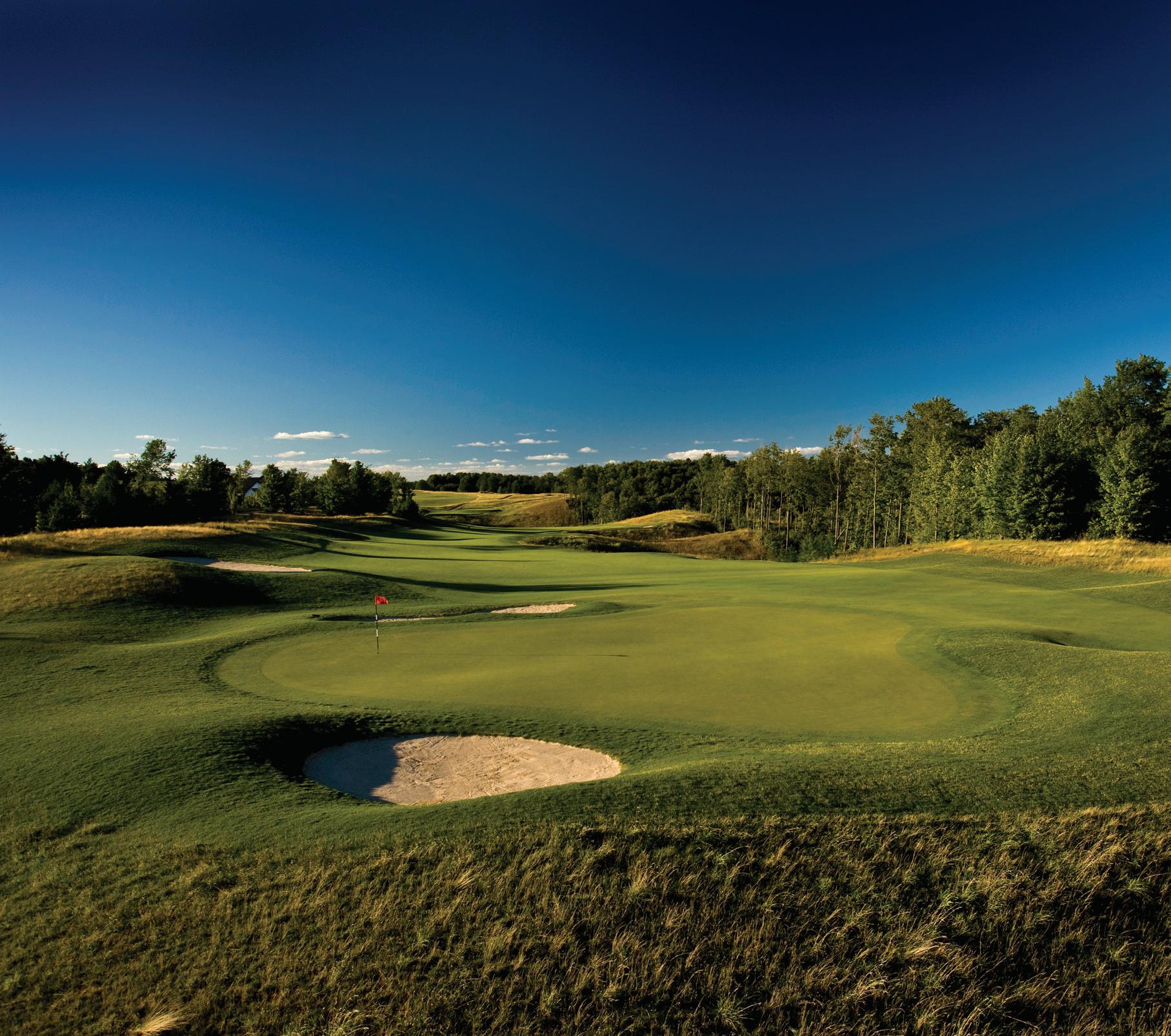
4 minute read
HAWAIIAN ISLANDS
Magnificent Maui
The sun sets on the Pacific and Kaanapail's rolling tropical layout.
Kaanapali is just the ticket for sun, sand and island golf as it’s meant to be
Although the former kingdom, then republic, of Hawaii ceded itself to the U.S. in 1898, it wasn’t until 1959 that it became the nation’s 50th state. Before joining the union, the divinely positioned collection of Pacific islands — the northernmost island group in Polynesia, attracted roughly 10,000 visitors a year. By 1967, however, thanks to huge improvements in air travel and movies like ‘Blue Hawaii’ in which Elvis Presley ably demonstrated the delights of the Aloha State, that figure had risen to well over a million.
Visitors came for the incredible weather — search the internet for ‘Maui climate’, glance at the temperatures and you’ll discover the mercury rarely dips below 78 degrees or rises above 86 — unfamiliar scenery, Polynesian culture, surfing and, in increasing numbers, golf.
Before statehood, the archipelago had boasted a number of military nine-holers and a couple of rudimentary 18-hole courses. But that began to change in 1960 when Robert Trent Jones arrived to build a championship-caliber course at the $40 million Kaanapali Beach resort development on the northwest coast of Maui. Hired by retail and sugar giants American Factors and the Pioneer Mill Company which were developing 800 acres on a 2.5 mile stretch of beach, Jones was the most sought-after designer in the business and built what he described as a ‘big course’ that extended to a formidable 7,215 yards. Jones felt it was a course from which ‘only true champions will emerge’ — a theory that would be put to the test in 1964 when the Canada Cup was staged on his design. The forerunner to the World Cup of Golf, the Canada Cup saw two-man teams from 20 nations play four rounds of stroke play in which every player’s medal score counted.
BY TONY DEAR
Representing the home team was Jack Nicklaus and Arnold Palmer (actually, the American side wasn’t the only ‘home’ team that week as Hawaii was invited to field a team of its own) — a pretty strong pairing that not surprisingly ran away with the title shooting a team score of 554 — 22 under par. The two best players in the world (and they finished first and second in the individual competition, too) recording the equivalent of 11-under each was a fair representation of the course’s demands — scoreable but far from easy. It’s fair to say Jones’s prediction that only true champions would emerge was fairly accurate. In 1976, a second layout was added on the east side of the Honoapi’ilani Highway that begins in Kahului and doesn’t quite make a full circle of the West Maui Mountains. The Jack Snyder-designed/ Robin Nelson renovated (2005) Kaanapali Kai Course is shorter and certainly less demanding than its bigger, older brother, but it’s equally as popular sharing the burden, pre-Covid, of a combined 90,000 rounds a year — a barely conceivable number given Maui’s population (just over 165,000), and the fact the mainland is over 2,000 miles away. Melissa Dupuis, a Kaanapali regular and the Hawaii Operations Manager for Indigo Partners, which manages the courses, names the 474-yard par-4 5th hole as her favorite on Jones’s original course, now called Royal Kaanapali (the town of Lahaina was capital of the Kingdom of Hawaii between 1820 and 1845). “It’s a dog-leg left,” says Dupuis, “with nature’s largest bunker (the beach) hugging the right side of the green, making it a beautiful, but very tricky, approach shot. Some players lay up and then hope to bump-and-run the ball close, while stronger players might take on the carry over the left fairway bunker and leave a much shorter approach.”
Either way, Dupuis continues, golfers will be able to see the gorgeous, white, sandy beach and the famous Black Rock when they arrive at the green. Formed by an ancient lava flow that divides the beach at Kaanapali into two, Black Rock, or Pu’u Keka’a, is a popular cliff-diving spot where Hawaii’s last chief, King Kahekili, often jumped into the ocean earning the respect of his people.
“This hole is understandably ranked the number one handicap hole,” says Dupuis. “Despite its difficulty though, the views can overcome a bogey any day.” On the Kai Course, which hosted the Golf Channel’s ladies only ‘Big Break Kaanapali’ in 2008.
Dupuis likes the uphill, par-4 7th that stretches to 395 yards and crosses a ravine with the tee shot. “When players reach the bunker-protected green, they are treated to a panoramic view of the Pacific and neighboring islands,” she says. “During winter months, they may even see whales breaching in the distance.”
The TifEagle Bermuda greens invariably run fast and true at Kaanapali which hosts one of college golf’s most anticipated tournaments each year. The Royal Course first hosted the Ka’anapali Classic Collegiate Invitational in 2014 since when a number of future PGA Tour players: Collin Morikawa, Aaron Wise, Sam Burns and Doc Redman have appeared. This year’s event takes place Nov. 4-7, by which time travel to Hawaii will be more or less back to normal.
If island time is beckoning you, visit kaanapaligolfcourses.com to research, read and set your Maui experience in motion.











